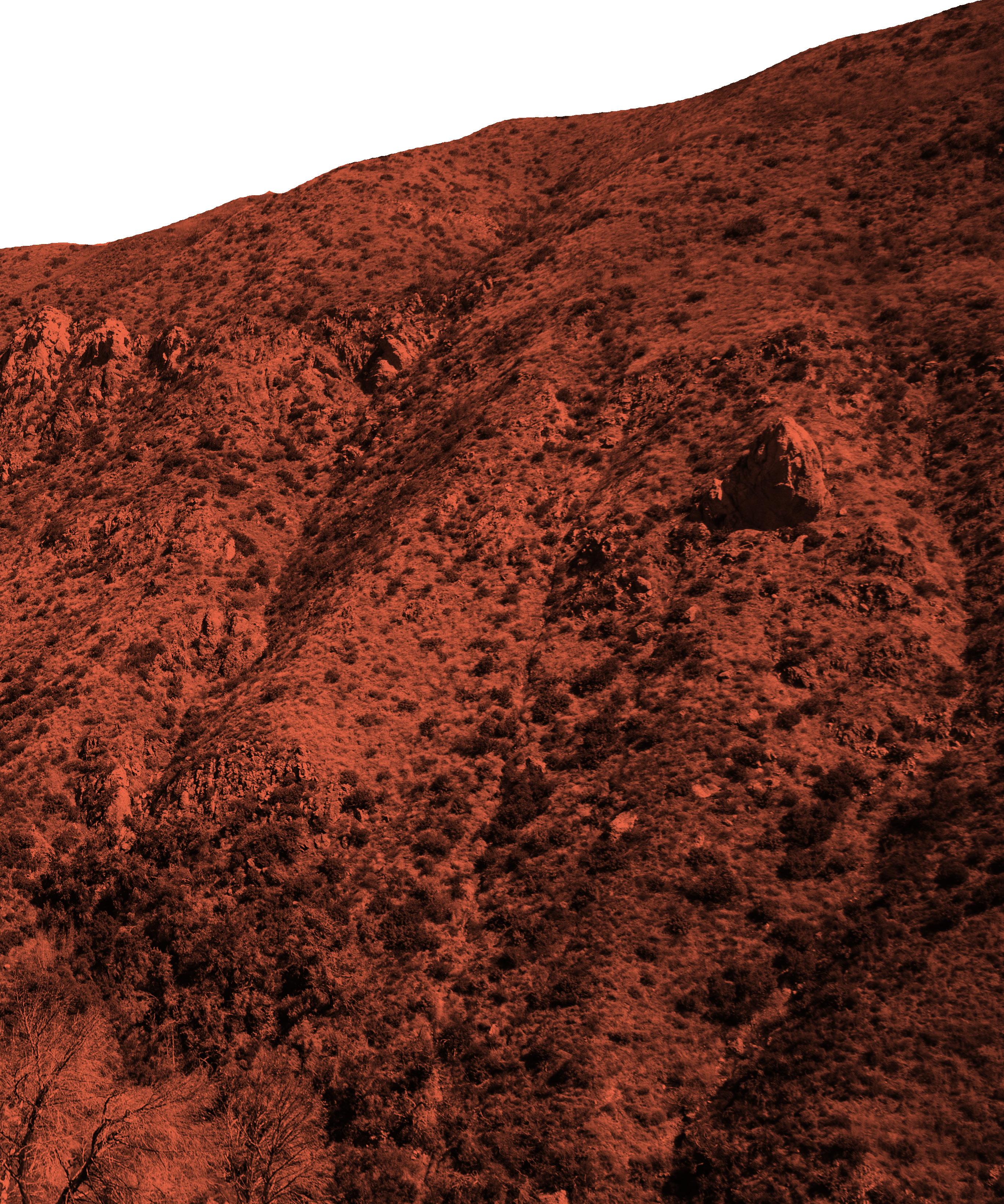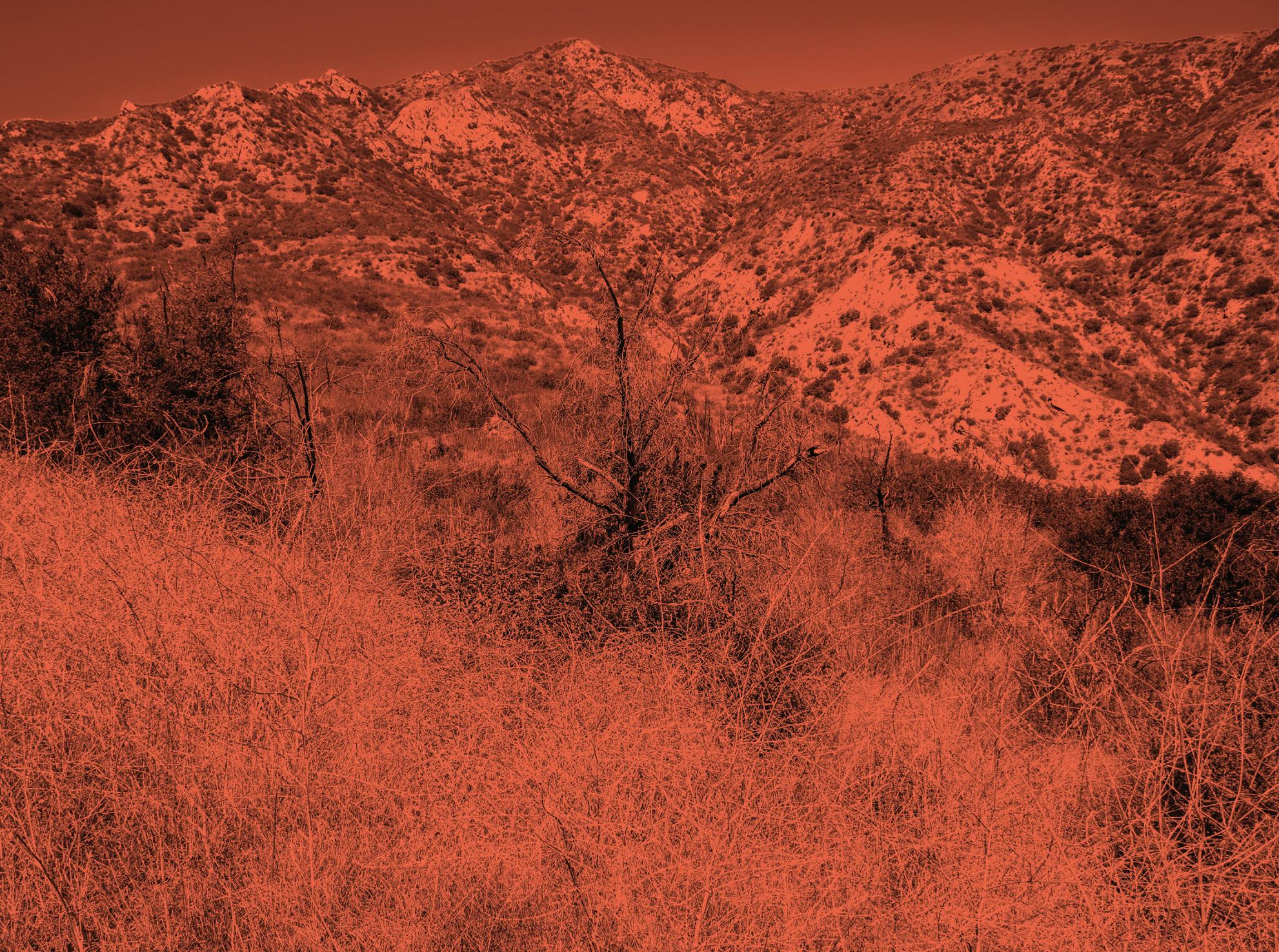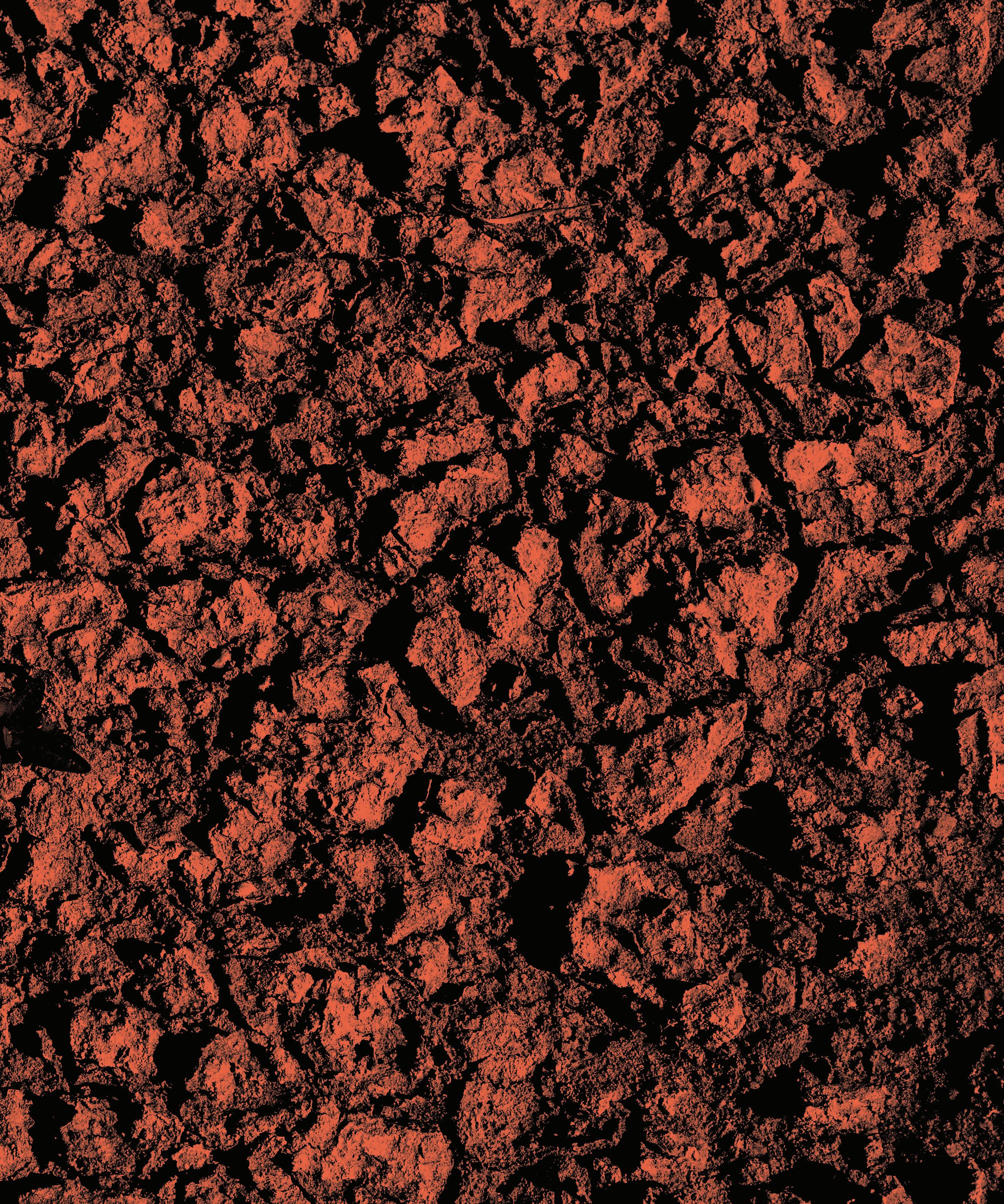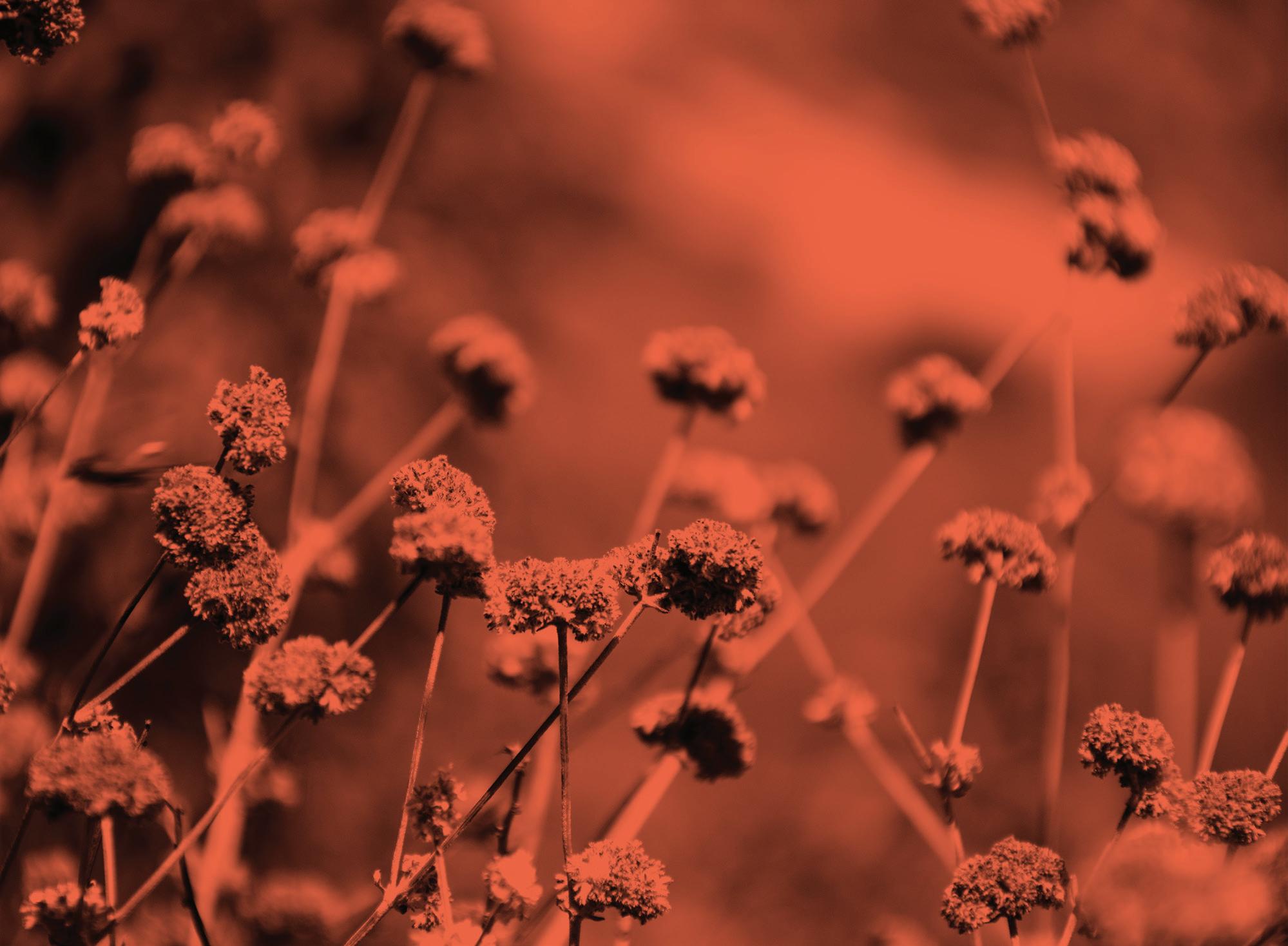
10 minute read
FORGED BY FIRE extreme weather events threaten Malibu
FORGED BY FIRE
extreme weather events threaten Malibu
FORGED BY
by Alec Matulka & Addison Whiten

Drought. Heat waves. Wildfires. People who don't experience extreme weather events might view them as abstract and otherworldly. But the lines between abstract threat and immediate danger have repeatedly blurred for Pepperdine University and the Malibu community, such as when the Woolsey Fire burned onto campus in November 2018.
Alumna Emily Stephens (’22) was on Pepperdine’s Malibu campus the day the Woolsey Fire came. Stephens grew up in nearby Oak Park and had prior experiences with wildfires, so as Woolsey approached campus, her peers asked her if what was going on was typical. "At that point, I told them, 'No, this is unlike anything I've ever experienced living and growing up in the area,'" Stephens said.
Stephens sheltered in place in the Tyler Campus Center and slept on the floor of the Caf the night of Nov. 9, 2018. She said she vividly remembers seeing how the fire turned the night sky bright red through the Caf windows.
“It looked like it was daytime," Stephens said. "It was almost like this weird apocalyptic setting because everything was on fire around us, so it was actually quite bright outside."
Extreme weather events like wildfires have become more frequent in Malibu over recent years, according to WeatherWest.com. Beyond the increased regularity, the severity of these events is mounting — in the past 30 years, Malibu has witnessed at least five wildfires larger than 3,500 acres.
Chris Doran, professor of Religion and Sustainability and founder of the Sustainability major and minor, said the increased frequency and severity of these events is due to anthropogenic, or human-made, climate change.
Photos by Lucian Himes
More Heat, Less Water

Anthropogenic climate change is a broad term covering the human impact on Earth's climate. Part of climate change is the more specific phrase “global warming,” which refers to the increase in the Earth’s overall temperature since the pre-industrial period of the 19th century, according to NASA.
Since then, Earth’s temperature has increased by about 1 degree Celsius — 1.8 degrees Fahrenheit — and increases each decade by more than 0.2 degrees Celsius — 0.36 degrees Fahrenheit.
The current warming trend is indisputably the result of human activity — specifically the burning of fossil fuels — since the 1950s, and is playing out at an unprecedented rate, according to NASA.
The burning of fossil fuels like coal and natural gas emits carbon dioxide, a greenhouse gas that holds in heat, Biology Professor Helen Holmlund said. The amount of carbon dioxide in the atmosphere has increased greatly since the Industrial Revolution, leading to the globe’s warming, according to the National Oceanic and Atmospheric Foundation.
“We're putting a thicker blanket on the Earth, and it's just trapping more of the sun's radiation,” Holmlund said.
While global warming and climate change have become modern political and social issues, Holmlund said understanding that rising temperatures would pose problems is nothing new.
“That relationship has just been known for a really long time,” Holmlund said. “It's been proposed that it will be an issue for a really long time, that adding CO2 to the atmosphere would be an issue in terms of rising temperatures.”
The Paris Agreement of 2015 drafted a "1.5-degree goal," which hoped to limit global warming to 1.5 degrees Celsius. Organizers of the Paris Agreement asked the Intergovernmental Panel on Climate Change to draft a report extolling the benefits of such a plan, according to the IPCC's website.
Despite the ambitions of the IPCC, Doran said dreams of keeping the global temperature increase below 1.5 degrees Celsius are a thing of the past.
“Not only are we going to fly past 1.5, most likely, but that 1.5-degree number was a really conservative estimate,” Doran said. “Now, we’re starting to realize there’s some consequences already happening the closer and closer we get to that.”
Doran said the Earth is already experiencing the immediate effects of the rapidly increasing global temperature: rising sea levels due to permafrost and glacial melts, as well as ice-sheet break off. Low-lying Pacific island nations such as Tuvalu and Vanuatu — home to hundreds of thousands of people — are already facing these consequences, Doran said.
“We are in a tough spot, because I think our best science from a decade ago is not our best science now,”


Doran said. “We’re seeing that the situation is much more dire than we thought a decade ago.”
Despite the term "global warming," not every region on Earth will experience climate change as an actual increase in temperature, Holmlund said, but the rising carbon dioxide levels in the atmosphere still affect the entire planet.
“It's rising global temperatures, so you might have regional higher or lower increases, or maybe even some regional decreases, but the overall average is increasing,” Holmlund said.
While sea-level rise will not directly affect Pepperdine's campus, considering its elevated location, Doran said heat waves like the one that pushed temperatures to 98 degrees in August will become more common and more severe. Limited air conditioning in Pepperdine dorms, Doran said, could pose a serious problem to student health.
One effect of rising global temperatures is an increase in droughts, specifically in regions that are already prone to drought — like Southern California. Just as rising global temperatures affect local climates differently, Holmlund said rainfall patterns will be similarly affected.
“Climate models show that some areas will have less rainfall, some will have more rainfall, but by drought, a lot of times what we mean is water deficit,” Holmlund said.
Water Deficits in Wildlife
A water deficit, or the amount of water plants could use if it was available, leaves them more susceptible to burning, Holmlund said.
Global warming causes water deficits in droughts. This is especially true in Malibu, considering the region imports all its water from the West Basin Municipal Water District, according to LACounty.gov.
Holmlund said droughts can also hurt plants by depriving them of water.
“When you have warmer temperatures, essentially you have more evaporative water loss from the soil,” Holmlund said. “So, less water in the soil means less water for the plants.”
Rising temperatures, and therefore more evaporation, means there is more of a demand for water to leave plants than there is supply of water in the soil for plants to consume, Holmlund said. This process is damaging to plants, as it puts a strain on their vascular systems.
“That [process of excess evaporation] can cause an embolism, an air bubble in the vascular system,” Holmlund said. “Just like an embolism is bad in our vascular system, an air embolism — an air blockage in the plant system's vascular system — is a bad thing. It's a thing that can choke plants.”
When plants are drought stressed, they don’t produce as much food for animals, Holmlund said. If plants die due to drought, wildlife loses vital habitats.



WOOLSEY, 2018
96,949 acres
CALABASAS, 1996
12,513 acres
OLD TOPANGA, 1993
16,468 acres
CITY OF MALIBU PEPPERDINE CORRAL, 2007
4,708 acres
CANYON, 2007
3,839 acres
WILDFIRES NEAR OR ON CAMPUS SINCE 1993
five fires. 134,447 acres.
Fueling the Fires
Rising temperatures, a drought in full-swing and normal plant and vegetation unable to naturally cope — these are ideal conditions for more frequent, severe wildfires, said Bradley Yocum, a retired L.A. County Fire Department fire fighter. For example, the Woolsey Fire was the worst wildfire in the past 90 years, according to the L.A. Times.
Yocum said the Santa Monica Mountains and Malibu are part of a fire climax community, meaning they exist in an ecosystem where fire is the dominant control factor. Wildfires have been, and continue to be, a natural part of the surrounding ecosystem. The chaparral biome and its coastal sage brush require occasional fires to burn away decrepit plants and make way for new growth, Yocum said.
While chaparral vegetation withstands wildfires, Holmlund said the shrubs require them about every six years to have new growth. Major wildfires occurred in 1993 and 1996, Holmlund said, killing off "seeder" shrubs that can usually reproduce after fires. "We still have some in a few isolated patches, but a lot of them are gone," Holmlund said.
The City of Malibu hired Yocum along with Greg Hisel, retired LACFD Assistant Fire Chief, in May. Yocum said the department intended for the hires to increase the city’s proactivity in fire preparedness, and he appreciates the city government’s response to the Woolsey Fire.
“I’ve been pretty impressed, because the education [the city of Malibu is] trying to show folks, the free programs, the money that will be available to some residents to mitigate these issues; they’re actually doing quite a bit,” Yocum said. “It’s not if, but when the next fire comes, they’re doing what they need to do. You can always do more, but they’re going in the right direction.”
The problem is not wildfires in general, Yocum said. The problem is their interaction with people, which has increased alongside Malibu’s population over the past 30 years. Yocum said when people started moving and building homes in Malibu, they unintentionally created more fuel for wildfires as a byproduct.
“When you build a home and it's made of wood, that’s also a fuel source,” Yocum said. “When [people] started moving in, they started planting high-fire hazard type plants: palms, acacia, eucalyptus, pines. It just made it worse.”
Pepperdine is no stranger to these wildfires: At least wildfires have impacted the Malibu campus since 1993, according to Pepperdine's emergency information website. The exact amount of money Pepperdine has spent on fire prevention and wildfire-related damages is unclear because Chief Operating Officer Phil Phillips declined to respond to emailed questions.*
Pepperdine utilizes a shelter-inplace policy during wildfires, which the LACFD reviews annually. Stephens said the Caf was still open during the Woolsey Fire, which made the ordeal more bearable.
“They were great at keeping all of us kind of calm, keeping us in like a sense of, 'Oh, we're being fed, we're being taken care of,'” Stephens said.
*The Graphic reaches out to every source multiple times to request an interview. In some cases, these sources may decline to comment. The Graphic conducts real-time interviews for in-depth stories and only uses email responses for data or when a source cannot participate in a real-time interview.
Education As a Solution
experiences with the Woolsey Fire made the seemingly-remote impacts of climate change feel all too close.
“If you want to put a positive spin on it, it was a great educational opportunity to kind of bring to light this larger issue of climate change," Stephens said.
Fighting wildfires starts years before they have burned a single acre, Yocum said. To prepare, students and young people need to learn that wildfires are burning more frequently and longer due to climate change.
“Education is paramount,” Yocum said. “Those are the folks that are going to be managing our forests, managing our cities, managing communities. They’re going to want to know how to handle these things.”
Doran said he agrees more education is needed, and that Pepperdine needs to be more direct in its language with regard to climate change.
“When our Center for Sustainability website says, ‘We have an open dialogue on climate change and sustainability,’ and uses this kind of code language, it seems to me that we’re not doing our best job in saying that all the science is as accurate as it can be, and so we should be treating this deadly seriously,” Doran said. “There’s a missed opportunity, considering our public-facing website doesn’t even talk about this issue.”
Doran said progress will look like more students being educated on sustainability and sound like more direct language from Pepperdine regarding climate change.
When progress is made, Holmlund said, it is vital to recognize and appreciate it.
“It's also really important to celebrate steps in the right direction,” Holmlund said. “It doesn't have to be an all or nothing. We're not going to give up just because we can't stop it tomorrow, right? We celebrate steps in the right direction and continue to work for progress.”





